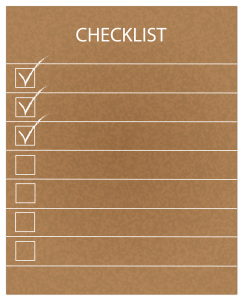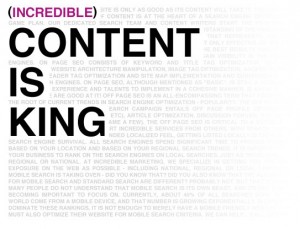How to Create Lead Nurturing Content That Actually Works
Content marketing has a strategy problem. Research from the Content Marketing Institute found that only 41% of content marketers always or frequently produce assets related to specific points in the buyer’s journey. This stat is startling because it means nearly 60% of content is produced with only vague regard for where it fits in the buyer’s journey.
So questions like, “Is this content relevant to your audience?” or “Will this material help people make more informed decisions or overcome their challenges?” simply aren’t being considered often enough. These questions are cornerstones of any decent marketing strategy, so if you’re not using them to align your content to the customer journey, how do you expect to nudge people closer to making a purchase?
Why You Should Develop Lead Nurturing Content
Relevancy is a moving target. What people find interesting when they first interact with your brand will change as their understanding grows. As buyers move closer to making a decision, the questions they’re asking change. This is process is referred to as the customer journey, because the information needs of the customer change over time.
In fact, research by Aberdeen found targeting users with content related to where they are in the buying cycle resulted in a 72% increase in conversions. Your goal as a content marketer must be to supply the best answers to the questions your audience is asking at any given stage of the journey. If you can manage that on a consistent basis, you’ll establish your brand as a trustworthy source of information.
And once it’s time for the customer to choose a solution, your organization will be in prime position because of the trust you’ve built with your audience. This is lead nurturing in a nutshell. And it’s critical for producing revenue because the vast majority of people who come to your website are not ready to buy from you. But if you maintain a relationship with your audience through email and retargeting campaigns, you can nudge them closer to making a purchasing decision. That’s why nurturing leads produces, on average, 20% more sales opportunities.
But you can’t nurture leads without content. And to do that, you have to understand the series of stages buyers go through in the customer journey.
The 5 Stages of Buyer Awareness (and the Content You Need for Each One)
A lot of people would like you to think the buyer’s journey is a recent phenomenon. And while it may have changed in the internet age, the concept of buyers moving through a series of information gathering stages before buying something is nothing new. Way back in 1966, the legendary copywriter Eugene Schwartz classified the five stages of awareness buyers travel through before making a decision. These stages are:
- Unaware
- Problem-Aware
- Solution-Aware
- Product-Aware
- Most Aware
Schwartz theorized that the primary reason marketing failed was because it’s not aligned to the stage of awareness of the audience. Here’s a deeper look at each stage Schwartz outlined in his book Breakthrough Advertising:
1: Unaware
In this stage, the customer has no knowledge of your company or even that they have a problem that needs solving. Content for this stage of the customer journey doesn’t need to focus on selling your product or service. Typically, this type of content will be something more newsworthy, like industry research results or a narrative piece.
Types of content to create at this stage:
- Infographics
- Industry research
- Human interest stories
- Event recaps
For example, Atlassian wrote a story about 500 of their employees working from home for a week. Atlassian sells project management software, so this is article is only marginally related to their product.
Your main goal at this point is just to attract people to your site who have an interest in your industry. Atlassian’s article does a nice job of mixing a human interest story with a subject that potential customers would be interested in. If the content is good, people will come back for more.
2: Problem-Aware
When someone is Problem Aware, they grasp there is a problem, either in their personal lives or in their business. They don’t necessarily understand how to solve that problem, but they do want to learn more. Content at this stage should speak directly to problems your company solves without overselling your organization. At this point, the goal is to provide value without asking for anything in return.
This phase is the crux of building trust between you and your audience. You need to convince people you understand their problems, and explain how they can solve them.
Types of content to create at this stage:
- Industry best practices
- Thought leadership
- “Why” posts that explain why industry problems occur
Contently uses the Content Marketing Institute’s annual event as a starting point for Problem Aware content. This article analyzes three big problems that are affecting Contently’s target market, i.e., content marketing managers. This type of industry analysis draws in marketers who are concerned about their content strategy and positions Contently as a trustworthy voice in the market. The post doesn’t mention Contently’s solution at all. Rather it simply provides education about problems that are relevant to readers.
3: Solution-Aware
Once someone decides their problems are pressing enough to fix, they move to the next stage, Solution Aware. In this stage of the customer journey, your audience is looking for solutions to fix their problem. This, my friends, is the first real time when it makes sense to emphasize the value of your solution in your content.
Now, the approach shouldn’t be to pontificate about your product specifically, but rather about the type of solution you’re selling.
Types of content to create at this stage:
- Content that explains the benefits of your type of solution
- “How x company achieved x” content that emphasizes your type of solution
- ROI calculators
This Apptentive post listing reasons why you need a customer feedback system is a perfect example. The post begins by acknowledging where readers are at in the customer journey: “By now, marketers and product owners understand the importance of listening to their customers.” The writer knows the audience understands their problems, i.e, they need to listen to their customers. Now, she has to convince readers that a customer feedback platform is the right solution to that problem.
Product-Aware
When someone is Product Aware, they are considering specific products that are solutions to their problems. Finally, this is the time to put your company front and center.
Types of content to create at this stage:
- Case studies
- Comparison posts between you and your competitors
- Testimonial videos
Your biggest consideration here is less about strategy — it’s probably not a surprise that you need case studies to persuade people — but rather how you execute it. Instead of gating their case studies behind forms, Appcues publishes blog posts that detail how companies have succeeded with their product.
The difference between good content and mediocre work at this stage is the detail with which you describe how your product helps people. The more specific you can be about how your product works to deliver value, the better.
Most Aware
Most Aware prospects are familiar with your product and the value it delivers. They just need an incentive to act.
Types of content to create at this stage:
- Free trials (for product companies)
- Free assessments (for service companies)
- Limited time offers
Klientboost utilizes it a free proposal to convert people who are Most Aware. The process contains multiple steps, with each screen emphasizing the value of your free proposal. Once someone converts with this piece of content, they’re basically knocking on your sales team’s front door. In fact, I bet discussing this free proposal is the first step in Klientboost’s sales process.
The key to creating this type of content is to compel people to act in the moment. Your offer should reflect the immediate benefits your audience will experience.
Conclusion
Lead nurturing isn’t easy. You have to understand what questions your audience is asking at each stage of their journey. Then you have to create the right content that speaks to each of those needs. Then you have to plot automation campaigns to deliver the content at the right time (a subject we’re barely covered in this post).
The fuel for your lead nurturing machine is content. And if you don’t have the right content, you’re letting customers slip through your grasp.
Bio: Zach is the Director of Content at DePalma Studios, an agency that specializes in enterprise UX. Zach’s work has been featured in Entrepreneur, Invision, and ConversionXL.




 Dynamic content can be
Dynamic content can be 



